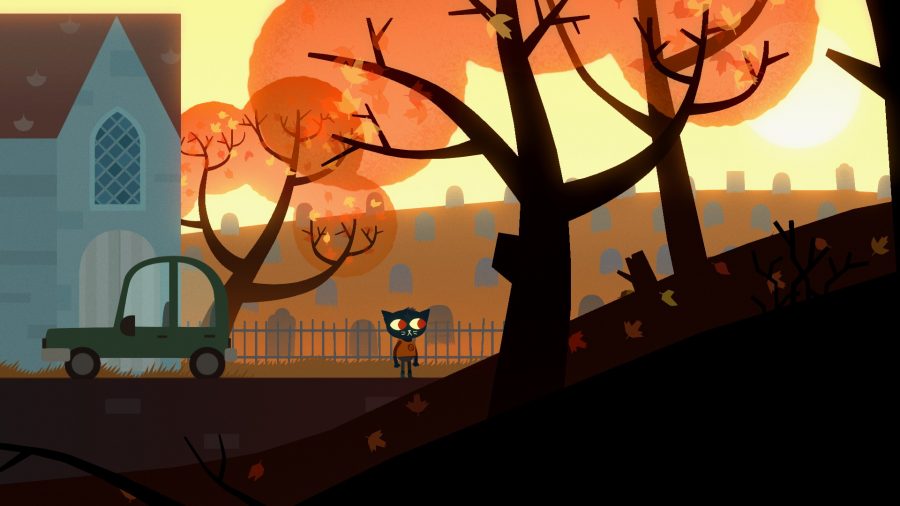‘Night in the Woods’ Navigates Complex Emotional Landscape
In Night in the Woods, developed by Infinite Fall, players explore Possum Springs as Mae Borowski, a 20-year-old college dropout returning to her hometown and rediscovering the life she left behind.
March 10, 2017
Night in the Woods, released February 21, provides an intimate window into a microcosm of human narrative drawn directly from real-world struggles. The game presents an unassuming but enjoyable experience centered around character interactions, rather than grand story lines and epic battles. The early and middle sections of the game don’t cry for attention or churn out one plot device after another to drive the character forward. That’s not what the creators care about. Behind the stylized town and the cartoon animal characters, Night in the Woods is at its best when exploring the depths of the human spirit in its quiet moments.
Developed by Infinite Fall, Night in the Woods doesn’t fit neatly in a genre. It’s more platformer than walking-simulator, as other games in this style of interactive fiction tend to be. The game revolves around Mae Borowski, a 20-year-old returning to her home town of Possum Springs after dropping out of college, as she rediscovers the town and friends she left behind.
Gameplay follows a relatively simple loop that accompanies Mae through Possum Springs each day, when you can talk with almost everyone in town. The dialogue, crisp and well-written, is the game’s main draw. I spent every day going to every location I could remember and simply talking with the people there, from Selmers, a neighbor who sits on her porch and spouts terrible couplets, to Bruce, the drifter who lives outside of the church.
The other main characters are her parents and friends from high school — Gregg, the up-for-anything best friend; his more serious boyfriend Angus; and Bea, who would leave Possum Springs if she could. Each one of these characters is so incredibly real that it was difficult for me to even think of them as characters. Gregg is lost and only seems able to find balance through Angus, who in turn sees Gregg as his other half. Bea feels trapped in a life she doesn’t want. The player chooses interactions and activities that reveal the complex motivations of each character. Mae’s mother, for example, proved to be one of the most interesting characters I’ve interacted with in any game for a long time, possibly ever. She rides the line between lovingly supportive of her daughter and desparately tired so incredibly well that, as the player, I felt for her even if Mae didn’t.
This leads to my largest problem with the game: I hated Mae. Notably, you don’t really shape Mae’s character, even if you do have some choice in dialogue. Essentially, you’re just guiding Mae’s interactions and watching her be herself. Throughout the story she is written as selfish and self-destructive, causing trouble and distress, almost always disregarding the concerns of her friends and family. This comes out most in her interactions with Bea, but it is also prevalent in late-game interactions with her mom.
Ultimately, the player is given an incredibly humanizing explanation for Mae’s callousness that puts her in a more sympathetic light. However, the early and middle parts of the game paint her as a shallow, frustrating person, and it was shocking to me how much the people in her life would cater to her every whim. Because this game draws so heavily on the internalized experiences and emotions of the player, others may read Mae somewhat differently. For me, no matter how hard I tried, Mae always messed up, refusing to acknowledge pain or desires other than her own.
Despite my distaste for Mae’s character, I was still enthralled in the game through the writing. Each piece of text is written with such life that I could imagine people I know saying every single line. Even when dialogue does get sentimental, it never squanders these moments with forced intimacy, spending them instead on deep catharsis and character building.
Night in the Woods is about real struggles faced by real people trying to get by. It is about losing your home, having mental breakdowns and being trapped by circumstances outside of your control. And it’s sad. But it’s also more than that. It acknowledges all these things and then asks the question, what next? The game doesn’t cheapen the struggles of its characters by giving them tidy solutions, and I don’t think it needs to.



















